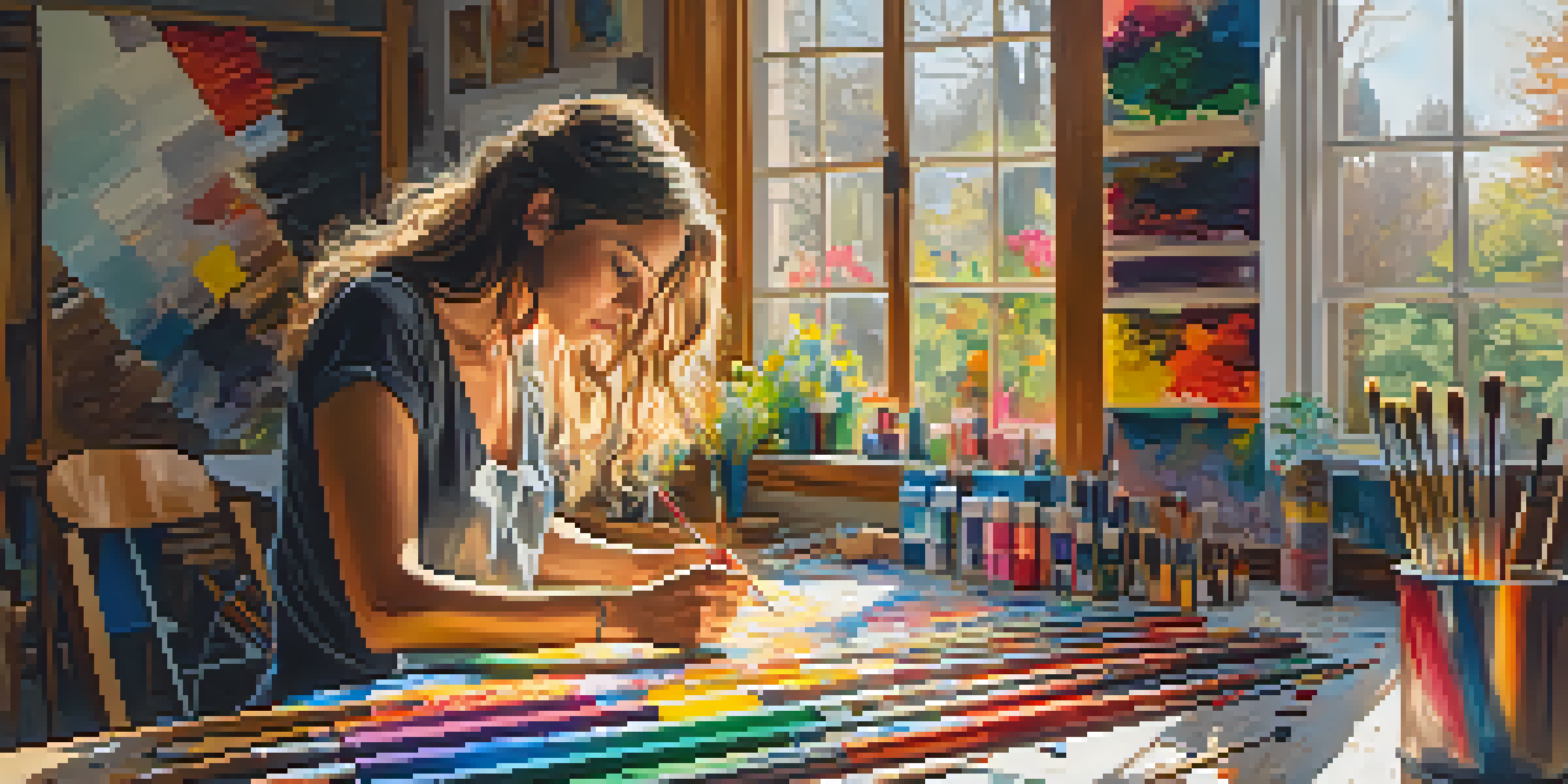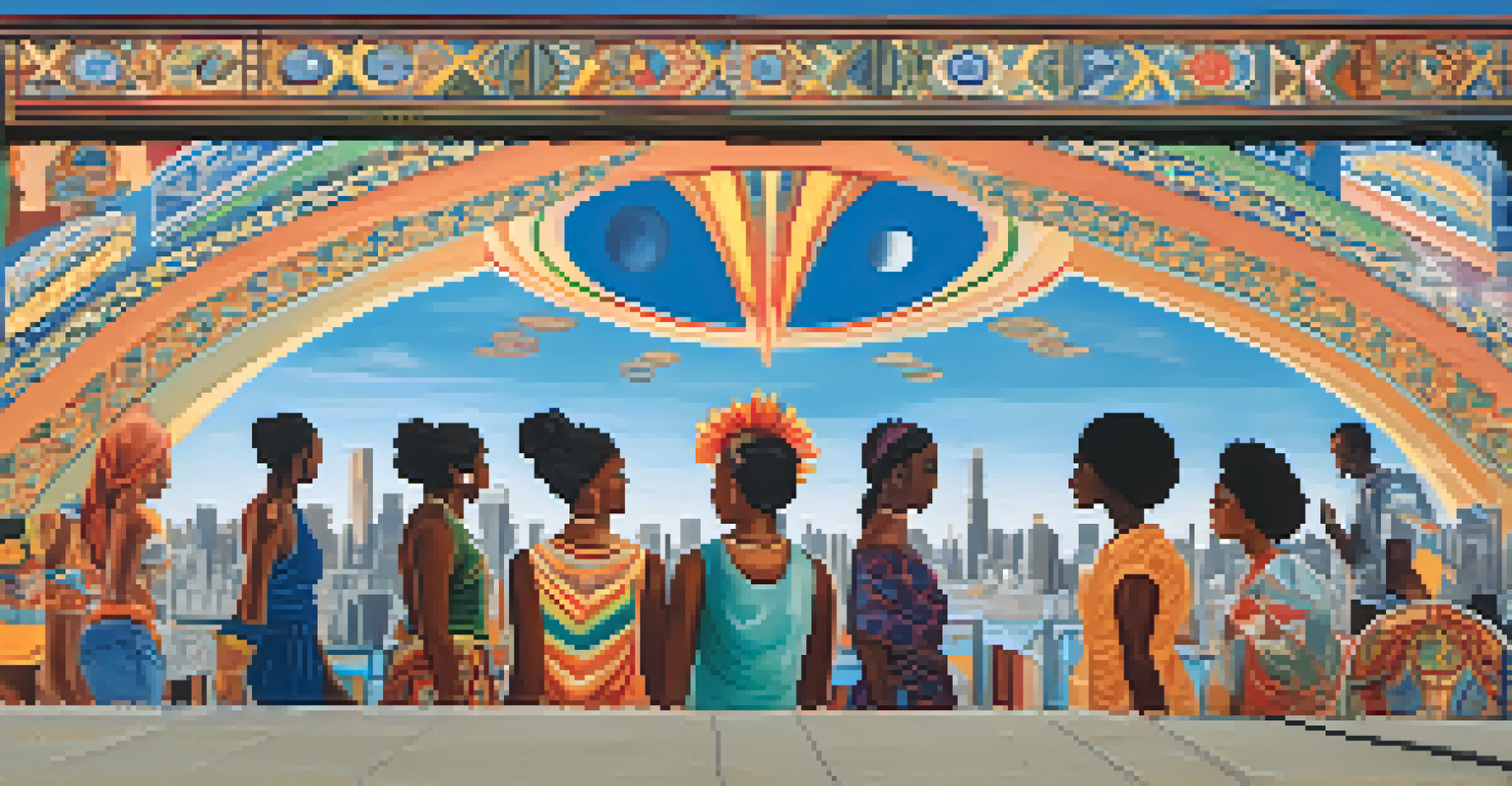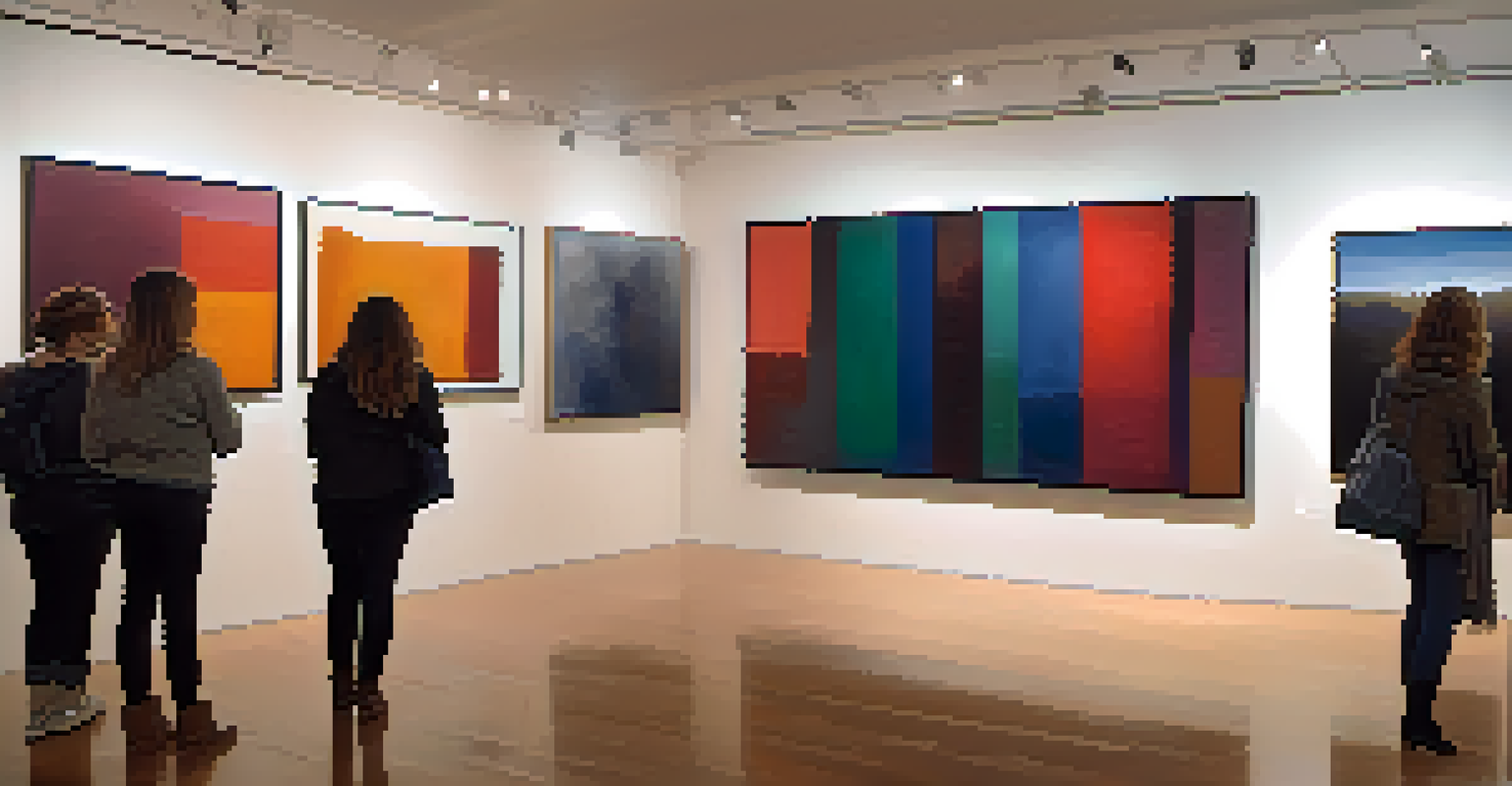Women Artists and Their Unique Perspectives on Identity

The Influence of Gender on Artistic Expression
Art has long been a medium through which individuals express their identities, and for women artists, gender plays a pivotal role. Their experiences often inform their perspectives, leading to works that resonate on deeply personal levels. This unique lens allows them to challenge societal norms and provoke thought about the roles women occupy in both art and life.
Art enables us to find ourselves and lose ourselves at the same time.
For instance, artists like Frida Kahlo have vividly illustrated the complexities of female identity through their work. Kahlo’s self-portraits delve into themes of pain, identity, and culture, reflecting her personal struggles and the broader female experience. Such art not only tells a story but also invites viewers to engage with the multifaceted nature of womanhood.
Moreover, the significance of gender in artistic expression doesn’t solely apply to individual experiences. It also highlights systemic issues within the art world, where women have historically been underrepresented. By creating and showcasing their art, women artists are carving out spaces for themselves and future generations.
Cultural Identity and Artistic Creation
Cultural identity is another crucial aspect that shapes the work of women artists. Many draw from their cultural backgrounds to create pieces that reflect their heritage and address issues like racism, immigration, and belonging. Through their art, they not only celebrate their cultures but also critique societal injustices.

Take the work of artist Ai Weiwei, for example, who collaborates with women artists from diverse backgrounds to highlight cultural narratives. Their collective efforts emphasize the importance of sharing stories that might otherwise be marginalized. This intersection of culture and gender creates a rich tapestry of experiences that broaden our understanding of identity.
Gender Shapes Artistic Expression
Women artists use their unique experiences to challenge societal norms and create art that resonates on personal and cultural levels.
As women artists share their cultural narratives, they also foster a sense of community and solidarity. This collaborative spirit reminds us that art can be a powerful tool for advocacy, shining a light on issues that affect marginalized communities and inviting dialogue around identity.
Intersectionality: The Multiple Facets of Identity
The concept of intersectionality is vital when discussing women's perspectives in art. This idea recognizes that individuals can belong to multiple social categories, such as race, class, and gender, all of which influence their experiences. Women artists often navigate these intersecting identities, creating art that reflects their complex realities.
The role of the artist is to make the revolution irresistible.
For instance, artists like Zanele Muholi explore themes of race and sexuality in their photography, portraying the lives of Black LGBTQ+ individuals in South Africa. Their work challenges the conventional narratives of identity and creates space for underrepresented voices. This blending of identities encourages a more nuanced understanding of what it means to be a woman in today’s world.
By embracing intersectionality, women artists not only highlight their unique experiences but also foster empathy among viewers. This approach invites us to consider the diverse tapestry of identities that exist, prompting conversations about privilege, oppression, and the multifaceted nature of identity.
Emotional Narratives in Women's Art
Emotion plays a significant role in the artwork created by women, often serving as a powerful conduit for personal expression. Many women artists use their art to explore emotions such as joy, sadness, anger, and vulnerability, creating a deep connection with their audience. This emotional depth can make their work particularly resonant and relatable.
Consider the poignant paintings of Tracey Emin, who often draws from her own life experiences. Her art conveys raw emotions and memories, allowing viewers to witness her journey. This kind of vulnerability can be both cathartic for the artist and transformative for the audience, as it prompts reflection on their own emotional landscapes.
Intersectionality in Women's Art
The concept of intersectionality allows women artists to reflect the complexities of their identities, fostering empathy and understanding among viewers.
The ability to convey complex emotions through art is a hallmark of many women artists. By sharing their innermost feelings, they contribute to a broader discourse about mental health and emotional well-being, encouraging others to explore these themes in their own lives.
Challenging Societal Norms Through Art
Women artists have long used their work to challenge societal norms and provoke thought. By confronting issues such as gender stereotypes, body image, and societal expectations, they push the boundaries of what is considered acceptable in both art and society. This rebellious spirit can lead to powerful conversations about change and empowerment.
For instance, the Guerrilla Girls, an anonymous group of feminist artists, use bold visuals and humor to critique the art world's gender and racial disparities. Their work not only sparks dialogue but also inspires action, encouraging viewers to question the status quo. This kind of activism through art is essential in fostering awareness and inspiring change.
Additionally, by challenging societal norms, women artists create space for others to do the same. Their courage to confront difficult subjects paves the way for future generations of artists to explore their own identities and push boundaries, ensuring that the dialogue around identity continues to evolve.
The Role of Technology in Women's Art
In today’s digital age, technology plays a transformative role in the way women artists express their identities. From social media platforms to digital installations, technology provides new avenues for creative expression and audience engagement. Women artists are leveraging these tools to share their work and connect with global audiences.
For instance, digital artist Amalia Ulman uses social media as a canvas to explore themes of identity, femininity, and consumer culture. Through her online persona, she creates a dialogue about the complexities of modern womanhood, challenging viewers to consider the impact of technology on their perceptions of self.
Technology Enhances Artistic Voices
In the digital age, technology empowers women artists to share their work globally, fostering collaboration and community-building.
Moreover, technology allows for greater collaboration and community-building among women artists. Online platforms facilitate conversations and partnerships that transcend geographical boundaries, fostering a sense of solidarity and shared purpose in exploring and expressing identity.
The Future of Women Artists and Identity
As we look to the future, the role of women artists in shaping our understanding of identity continues to grow. With a new generation of artists emerging, we can expect innovative approaches that reflect the ever-evolving landscape of identity. These artists are likely to draw on diverse influences while addressing contemporary issues that resonate with their experiences.
Furthermore, the ongoing dialogue around representation in the art world is crucial. As more women artists gain visibility, their unique perspectives will continue to influence art and culture, paving the way for broader acceptance of diverse identities. This shift is essential in creating a more inclusive art community.

Ultimately, the future of women artists and identity is one of empowerment and exploration. By embracing their voices and experiences, these artists will not only shape the art world but also contribute to a richer understanding of what it means to be human in today’s complex society.